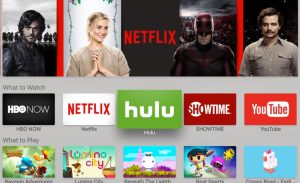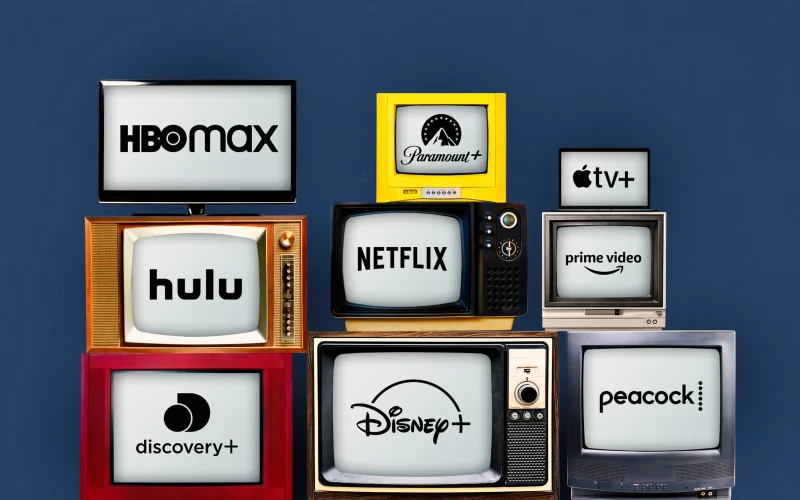Introduction
Streaming platforms, like Netflix, Amazon Prime, Disney+, and Hulu, have changed the way we watch movies and TV shows. These platforms have had a big effect on how films are made, shared, and enjoyed. In this article, we’ll look at how streaming services have impacted the film industry, focusing on changes in film production, distribution, audience behavior, and more. We will also include an analysis and comparison of traditional film methods versus the new world of streaming services.
The Role of Streaming Platforms in the Film Industry

Streaming platforms have played an important role in shaping the modern film industry. They have changed the way films are distributed, allowing films to reach a global audience instantly. These platforms also support the production of original content, which has led to a rise in new and diverse stories. Streaming services are now a key player in the entertainment world, offering a space where both big-budget and smaller films can find their audience.
The Changing Way Films Are Shared

1. Traditional Film Sharing
In the past, films were mostly shown in theaters first, then released on DVDs, cable TV, or home video. Movie theaters were the main place people went to see films. Theaters depended on ticket sales for most of their money. After the theater release, movies were made available at home for viewers to rent or buy.
However, streaming platforms have changed this. Now, people can watch movies whenever and wherever they want. Films can be available to stream on platforms the same day they hit theaters or even after a short time.
2. The Effect of Streaming on Film Sharing
Streaming platforms have made films more accessible to people, even if they don’t have access to a nearby theater. Films can be watched on a variety of devices, like smartphones, laptops, and smart TVs. Some films that would have only been shown in theaters are now being released directly on streaming platforms.
This has made the process of getting movies to audiences faster and more convenient, changing the traditional way of film distribution.
Changes in Film Production

1. New Opportunities for Filmmakers
Streaming platforms have also changed how films are made. Instead of only working with big movie studios, filmmakers can now produce films directly for streaming platforms like Netflix and Amazon Prime. These platforms are known for investing money in original content, offering new opportunities for filmmakers.
Many of these platforms are willing to take risks on projects that may not fit the typical movie mold, such as niche genres, unusual storytelling, or stories from underrepresented groups. This has opened up opportunities for filmmakers who might not have had a chance to work with traditional studios.
2. Challenges for Filmmakers
While there are more opportunities to create films for streaming, there are also some challenges. With so many movies available on streaming platforms, it can be hard for independent filmmakers to stand out. Another challenge is that streaming platforms often pay a flat fee or royalties for films, which can be different from the box office revenue filmmakers would make from theater releases.
Changing Audience Behavior

1. Convenience and Accessibility
One of the biggest benefits of streaming is how easy it makes watching films. Instead of waiting for a movie to come out on DVD or watching it on TV, viewers can stream films on their phones, laptops, or TVs whenever they want. This convenience has made streaming a popular choice for many people.
Streaming platforms also make it easier to watch films from around the world. People can now enjoy foreign films and independent movies they might never have seen in theaters. This has expanded the range of content available to global audiences.
2. The Growth of Niche Audiences
Streaming services cater to many different types of viewers, offering films and shows in many genres. Platforms like Netflix and Hulu have created space for niche content that wouldn’t always be shown in traditional theaters. Whether it’s foreign films, documentaries, or small-budget projects, streaming platforms give audiences more options to find films that suit their interests.
3. Social Media and Viewer Engagement
Social media has also changed how viewers interact with films. Platforms like Twitter, Instagram, and TikTok allow people to share opinions and reviews about films easily. Streaming services also use social media to help market their films and encourage buzz. This has allowed certain films to go viral, gaining more attention thanks to social media.
Economic Effects on the Film Industry

1. Revenue Models and Financial Success
Streaming services work on a subscription-based model, where viewers pay a monthly fee to access a large library of films and shows. This has changed how filmmakers earn money, as they don’t rely on box office ticket sales. However, measuring a film’s success on streaming platforms can be tricky, as many platforms don’t share detailed data about how many people are watching.
2. Impact on Movie Theaters
The rise of streaming has had an impact on traditional movie theaters. As more people watch films from home, theater attendance has gone down, especially with the COVID-19 pandemic affecting theaters worldwide. This has raised questions about how long theaters will be able to survive in an era where streaming is so popular.
Some movie theaters have tried to adapt by offering better experiences, such as luxury seating and big screens. But with streaming platforms offering so many films on-demand, theaters are facing tougher competition.
Streaming’s Impact on Traditional Movie Theaters

The rise of streaming platforms has changed the way people watch films, which has affected traditional movie theaters. More people are choosing to watch movies from home instead of going to the theater. As a result, theater attendance has decreased, and many theaters are struggling to compete. Some movie theaters have tried to adapt by offering better experiences, like luxury seating and enhanced sound systems, but they still face challenges due to the growing popularity of streaming services.
The Shift to Digital Film Production
Streaming platforms have also influenced the way films are produced. More filmmakers are creating content specifically for streaming services, which allows them to reach a wider audience. These platforms often provide more creative freedom compared to traditional movie studios, enabling filmmakers to take risks with different genres, themes, and storytelling methods. As streaming services invest heavily in original films and series, digital production has become more important, changing the way films are made from start to finish.
Streaming Platforms and Film Awards

Streaming platforms are now becoming a significant part of the film awards scene. Films that debut on streaming platforms, such as Netflix’s “Roma” and “The Irishman,” have received critical acclaim and nominations for prestigious awards like the Oscars. This has led to debates about whether films released on streaming services should be considered for major awards, just like those shown in theaters. The growing success of streaming platform films at award shows shows that the industry is recognizing the importance of these platforms in shaping the future of cinema.
Global Reach and Content Diversity
Streaming platforms have a global reach, allowing films and shows to be watched by audiences around the world. This has opened up opportunities for films from different countries to be seen by more people. Viewers can now enjoy movies in foreign languages or explore different cultures through film. This access to a wide variety of content has increased the diversity of films that people watch, offering a broader range of stories and perspectives.
The Challenges of Streaming Platforms
While streaming platforms have many benefits, they also face challenges. One of the biggest challenges is competition. There are so many streaming services available, making it harder for films to stand out. Additionally, streaming platforms don’t always provide clear data about how many people are watching, which can make it difficult to measure a film’s success. For traditional movie theaters, the rise of streaming has also led to a decline in attendance, making it harder for them to compete.
The Future of Streaming in the Film Industry

The future of streaming will likely involve even more changes as new technology is introduced. Innovations like virtual reality (VR) and augmented reality (AR) could bring new ways to experience films. Streaming services may also use artificial intelligence (AI) to recommend films based on what viewers like.
Streaming platforms are likely to keep growing, changing how films are made, distributed, and consumed. While there will still be room for traditional movie theaters, the future of the film industry is closely tied to streaming services.
Comparative Table: Traditional vs. Streaming Film Distribution
| Aspect | Traditional Film Distribution | Streaming Film Distribution |
|---|---|---|
| Access to Films | Limited to theaters, DVDs, and cable TV. | Instant access on phones, laptops, TVs, and more. |
| Release Window | Films first shown in theaters, then home video. | Simultaneous release in theaters and streaming. |
| Revenue Model | Box office, DVD sales, TV syndication. | Subscription fees, flat fees, or royalties. |
| Audience Reach | Limited to specific locations and theaters. | Global access anywhere with internet. |
| Filmmaker Opportunities | Must work with major studios and distributors. | Independent filmmakers can work directly with platforms. |
Analysis Table: The Impact of Streaming on the Film Industry
| Area of Impact | Traditional Film Industry | Streaming Film Industry |
|---|---|---|
| Production | Studio-backed, big-budget films. | More diverse films, low-budget, independent content. |
| Distribution | Theatrical releases, home video, cable. | Direct-to-streaming, bypassing traditional theaters. |
| Revenue Generation | Box office, DVD sales, home video rentals. | Subscription fees, royalties for content. |
| Audience Engagement | Limited audience interaction. | Viewer reviews, social media engagement, viral campaigns. |
| Global Reach | Limited to specific regions. | Global availability, no geographical limits. |
Conclusion
Streaming platforms have had a major impact on the film industry. They’ve changed how films are made, shared, and watched. With the rise of platforms like Netflix, Amazon Prime, and Hulu, filmmakers have more opportunities to create content, and audiences have more ways to enjoy movies. However, streaming also poses challenges for traditional movie theaters, which are seeing declining attendance. The film industry is likely to keep evolving, with streaming playing an increasingly important role in shaping how films are produced and consumed.










